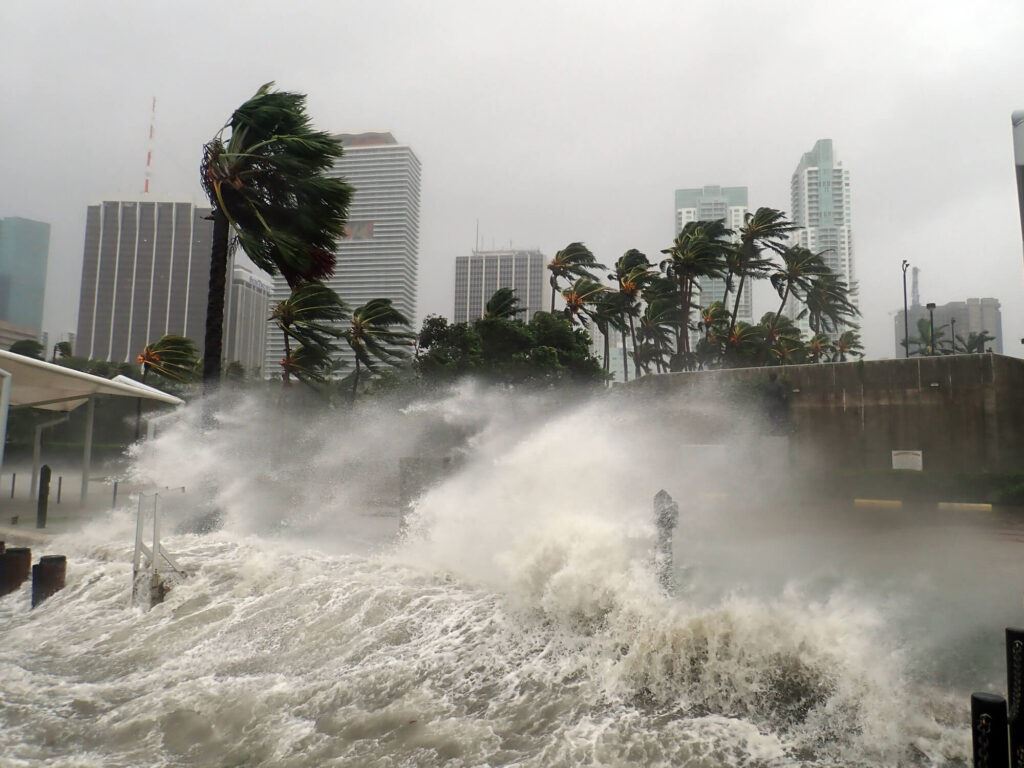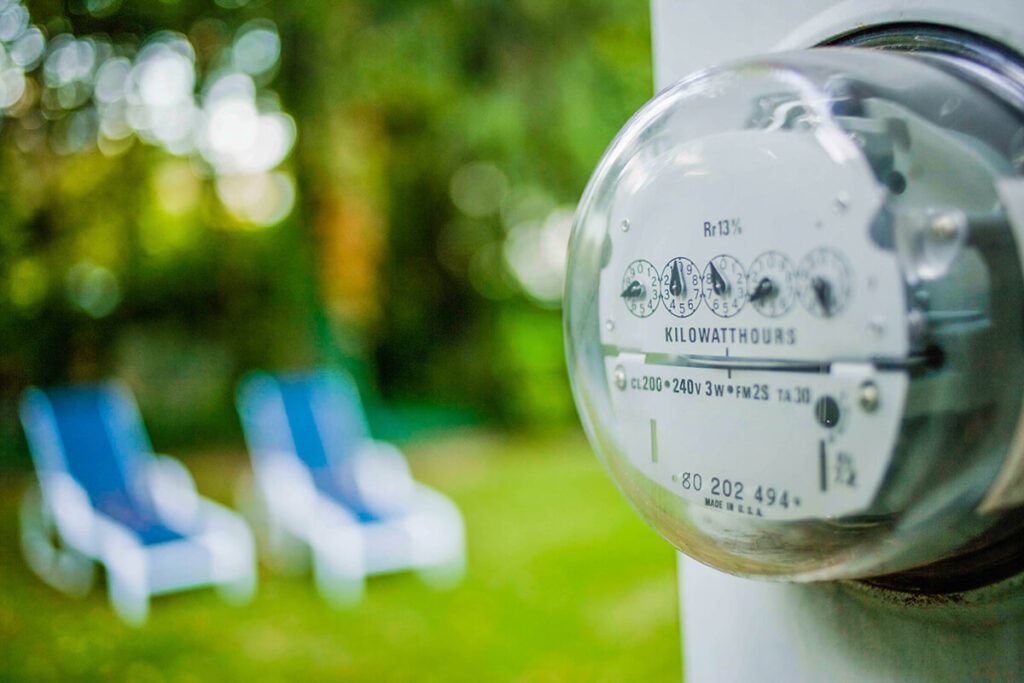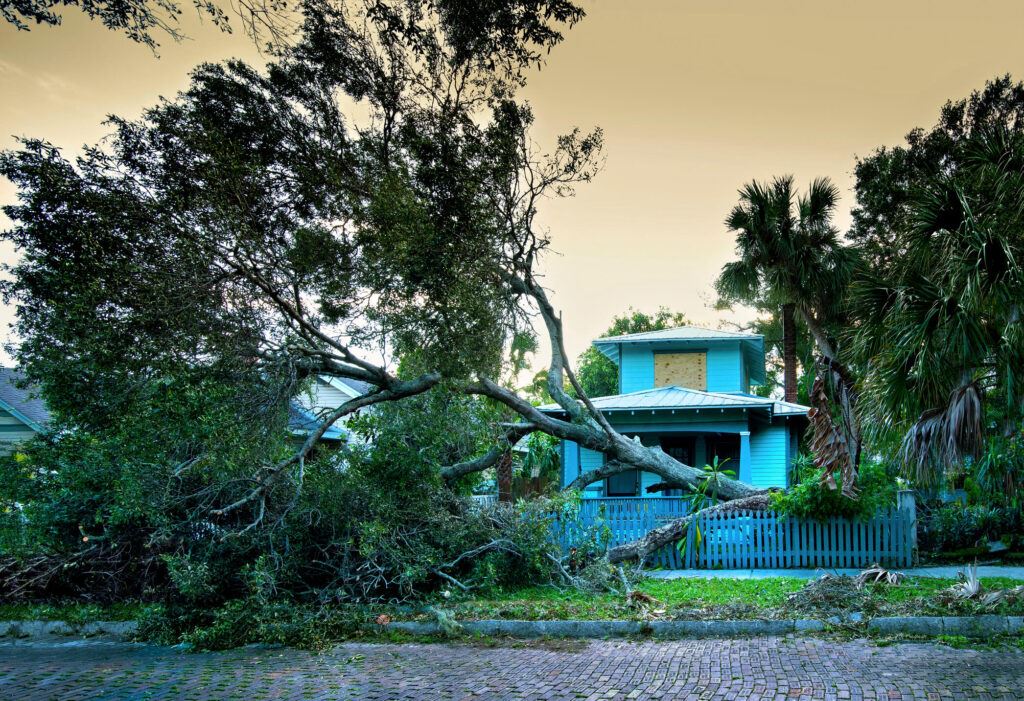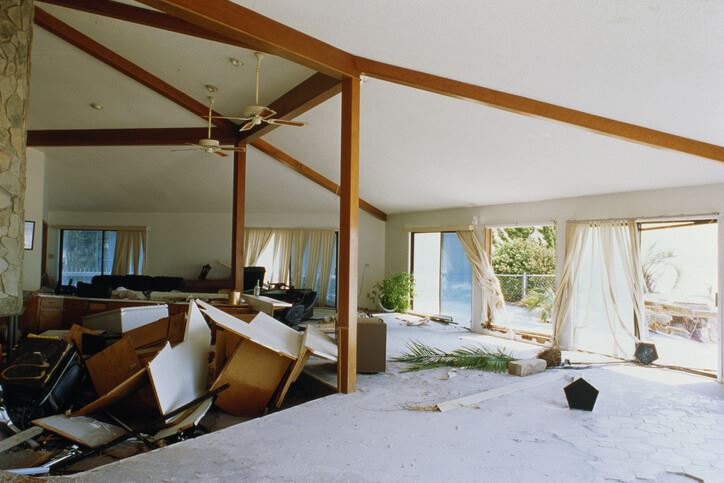Residential Electrical Safety Issues You Need To Know About in SWFL
Southwest Florida homeowners live in one of the most turbulent climates in the continental United States. In a matter of hours, the weather can transform from a dreamy tropical paradise into a nightmarish barrage of swirling hurricanes, relentless tornadoes, destructive waterspouts, pounding rain showers, or endless lightning strikes. In extreme cases, conditions can change drastically in mere minutes and lead to multiple extreme weather events in a single day.
Fortunately, human beings have devised countless ways to protect themselves and their property from these threats. Some of these protections, like underground power lines, are provided for the benefit of the general public or come pre-installed in houses. However, it may be wise to invest in additional home protection.
According to the Lee County 2022 Hazard Identification and Risk Assessment, residents faced nearly $10 million from flooding alone in average property damage every year since 1955. When other natural disasters like wildfires and tropical cyclones are factored in, that number is more than 4 times greater. As such, we’ve put together this guide of basic tips and warnings to help southwest Florida homeowners deal with the unique hazards in our unique corner of the country.

Know Your Electrical Safety Responsibilities
Before discussing maintenance of any utility in your home, it is important to understand who is responsible for that maintenance. This can vary to some extent depending on your local utility, laws, and jurisdiction, but there are generally some common policies that are good to know. After all, nobody wants to hire a professional to fix something only to discover that their utility company is responsible for the repair.
Electrical Systems
Most people get their electricity from an electric utility provider, whether public or private. All of the interior electrical systems located within the walls of your house are your responsibility, but the situation with the exterior electrical systems is a bit more complicated.
The utility is typically responsible for maintenance of the following components:
- The Service Drop. The service drop is the wire running from the main power line (often suspended by interconnected utility poles) to your home. Note that this only includes the wire itself, not the connection point on your property. The good news, however, is that this is one of the most exposed—and therefore most commonly damaged—components on the average homeowner’s property, meaning that electrical system damage is often not the responsibility of the homeowner.
- The Electric Meter. This is the device that measures your electricity consumption in kilowatt-hours. Traditionally, this is the meter that a utility worker (a “meter reader”) periodically comes by to inspect and record for the purpose of calculating your electric bill. Although many utility companies are moving toward digital remote meter tracking, eliminating the need for meter readers, the meter itself is not yet obsolete and serves as an important mechanism for backup and verification. Note that this only covers the device itself, and not the protective housing box around the electric meter.

On the other hand, the homeowner is typically responsible for maintenance of the following components:
- Weatherhead and Insulator. This is the point where the service drop cable connects to your home. Generally, this includes a pipe that protects the cable and connection point called an insulator (also called an electrical conduit) and a hood-shaped sealed head where the wires come out (called the weatherhead, sometimes also called a weathercap, service head, service entrance cap, or gooseneck).
- Service Entrance Cable. This is the wire extending from your weatherhead to the meter, and from the meter to your fuse box or circuit breaker box.
- Meter Box. This is the protective shell around your electric meter.
- Fuse Box or Circuit Breaker Box. This is the main service panel that houses your fuses or circuit breakers.
- Household Wiring. The interior wiring that distributes electricity through your home.
It is also important to know that it is usually your responsibility to keep access open to the meter, and to keep any possible obstructions far away from the power lines that extend from the utility pole to your house. If trees on your property grow near power lines, remember: DO NOT prune or remove them yourself. You should always consult with a professional tree contractor who is fully qualified to work around electric equipment.
Plumbing Systems
When it comes to plumbing systems, the responsibility situation is far less complex. Again, while the rules vary based on jurisdiction, the homeowner is responsible for virtually all sewer and plumbing problems. Whether it’s a leaking faucet, broken pipe, or clog deep in the sewer laterals, getting the issue resolved is a task that falls squarely on the shoulders of the property owner.
This unfortunately applies for instances that can make the liability rules seem counterintuitive (e.g. roots from trees off of your property damaging pipes). Homeowners are also responsible for sewer laterals—the underground pipes that connect your home wastewater to the main sewer line in the street—extending all the way to the main line owned by the municipal wastewater utility.
There are two types of sewer laterals: upper laterals and lower laterals. The upper lateral runs from your home to the property line, typically the curb or sidewalk. The lower lateral is the section of residential plumbing that runs from the property line to the public sewer main line in the street. Although many homeowners assume that lower lateral piping is not their responsibility since it runs past their property line, this is not the case. In most situations, it is the residential property owner who must maintain and repair the lower lateral piping.
Weather Damage Prevention
Southwest Florida homeowners, particularly those with houses on or near the shoreline, face many challenges when protecting their property and family from extreme weather. These include electrical, water, and wind damage, each with its own unique vulnerabilities and maintenance requirements.

Saltwater Damage
While seaside living provides unparalleled views and recreation opportunities, it also poses unique risks for property. Saltwater is a big part of that equation. One example: with saltwater, electric cars can be turned from an environmentally friendly and cost-saving means of transportation into a severe fire hazard.
Other risks posed by saltwater are its tendency to promote mold and mildew growth, and its corrosive nature. Salt can wear down the concrete and metal in your property rapidly, and that can lead to severe structural damage over time. Although salt corrodes these building materials slowly, that can actually be an even more dangerous threat; a false sense of security can set in since it might take years before reaching a critical mass of damage that causes walls to collapse suddenly or house foundations to lose stability.
Electrical damage is another common problem. Although pure water has almost no conductivity, the more saline water becomes the more efficiently it can carry an electrical charge. That means it is important to cut the electricity to any areas that might be flooded in the near future and stay far away from standing saltwater if the electricity is on nearby. It may be necessary to evacuate if saltwater comes into contact with saltwater to avoid severe electrical shocks and the risk of fire. Always listen to emergency responders and restoration professionals in such situations.
Dock Maintenance
Docks present their own set of saltwater concerns. Although they are typically made from either easily replaceable coated wood or more durable materials, they can still be damaged by saltwater or severe weather conditions. Water damage from flooding and other disasters can become dangerous when it damages or expose dock electrical systems, such as those for lights and pumps. This is one of the chief causes of a condition called Electric Shock Drowning (ESD), where electrical currents in water cause sudden drowning. According to Practical Sailor, “the human body runs on electricity and if you overload the nervous system with an external field, everything goes haywire. Every year several people die because they go swimming near a dock, a wiring fault creates an electric field in the water, and their muscles freeze.”
General dock maintenance is an absolute necessity to prevent ESD. That means:
- Regular cleaning. Routine and thorough cleaning can go a long way in extending the lifespan of a dock. A pressure washer is a great tool to accomplish this with, but as with any tool that is only true if you know how to use it the right way. In the wrong hands, pressure washers can backfire and be more damaging than protective. Always start with a fan-tip nozzle, never placing the pressure washer less than an inch away from the dock deck. Any closer, and may be at risk of damaging the deck. If your dock is built with cedar or a similarly vulnerable wood, do not exceed a pressure of 600 pounds per square inch (PSI).
- Re-stain annually. Annual maintenance is a must, and that includes re-staining that prolongs your dock’s life expectancy. Use a water-based stain, and do so when tides are low and there is a lower chance of stain pigments getting in the water.
- Use rubber rails, bumpers, and boat fenders. Bouncing boats are a major threat to dock stability. Use rubber edging to protect your dock from sharp, destructive collisions with boats.
- Use pressure-treated wood. The unpredictability of Southwest Florida weather means that docks—and all structures—need to be stable and well-built. Pressure-treated dock pilings and decks are built to withstand the rigors of hurricanes, high tides, and anything else you could expect in this corner of the Sunshine State.
- Pay attention to the marine environment. Keeping your dock in harmony with coastal wildlife isn’t just beneficial to the environment, it’s also a matter of saving yourself money and protecting your dock. A dock that interrupts or pollutes the surrounding habitat has a shorter lifespan, being more vulnerable to barnacles, crustaceans, and even the dreaded dock-eating shipworms. The mineral balance of the water nearby is important, too. You can buy biodegradable cleaning agents, but you can also make your own. Clean boat docks with a paste of baking soda and water, and remove oil stains with a mixture of olive oil and cleaning vinegar.
Wind Damage
Whether it’s hurricanes, tornadoes, or “merely” the brute force of strong storms, wind damage is one of the most common threats American homeowners face—especially in Southwest Florida. This can expose electrical wiring, therefore exposing your home to electrical and fire hazards.
As such, the Federal Emergency Management Agency (FEMA) has identified several ways to avoid the severe fire, electrical, and plumbing/water damage threats that powerful windstorms pose. They are:
- Use storm shutters to prevent windows from breaking when there is windborne debris. According to FEMA’s pamphlet on the issue, you can also “add shatter-resistant film or stormproof high-impact glass to defend glass from breaking.”
- Reinforce garage doors and double-entry doors. These types of doors are at risk of failing under significant wind pressure. According to FEMA, “garage doors can be reinforced with girts and by strengthening the wheel tracks…[and] double-entry doors can be reinforced with a heavy-duty deadbolt, adding slide bolts on one of the doors, and using longer hinge attachments on the door and frame.”
- Fortify your roof. Re-attach any loose shingles and consider impact-resistant shingles when installing a roof. A professional contractor can install these, or install roof strappings to anchor the roof framing to the wall framings so that the wind can’t peel your roof off the top of your home.
- Trim unstable branches. Powerful winds can cause trees and branches to fall, so it’s crucial to check any dead or damaged trees on the property and get them trimmed or removed on a regular basis. The rule of thumb FEMA gives is ensuring that your home is at least a full-grown tree’s height (approximately 40 feet on average) away from the base of any tree.
- Secure outdoor objects like furniture, gutters, and downspouts. Smaller and lighter objects should be collected and brought indoors.
- Replace or remove rocks and gravel materials. These materials can cause major damage during a severe windstorm. During particularly strong weather events, pebbles and bits of gravel have been found inside punctured mailboxes and have even shredded through the sides of houses. Replace these materials with a softer material, such as mulch or dirt, or remove it entirely.
- Weatherize fuel tanks and utilities. If you have an exterior fuel tank or any of your utilities are provided onsite from outside your home, anchor them or tie them down according to their ground anchoring instructions. This helps reduce the risk of them overturning and sliding, or even worse, for fuel tanks to leak and pose a fire or explosion risk.

Storm Electrical Damage
Home electrical systems can be damaged by all sorts of inclement weather, especially thunder storms. Keeping safe during these events can be a challenge, but with the right know-how you can protect your family and property effectively.
Power Surges
One of the most common types of thunderstorm damage is a power surge. This often happens when lightning strikes on or near a power line. That increases the amount of electricity running through the line, which can fry the electronics, appliances and machinery that are plugged into it. The best way to protect against power surge damage is to unplug items before a storm, but of course that may not always be a possibility. The next best option is a home surge protector which can minimize significant power spikes.
Breaker Damage
If your home is hit by lightning, it can cause damage to your breakers and your entire home’s electrical system. This is more dangerous if you have an outdated electrical system. However, newer homes have circuit breakers that are more likely to withstand the strike and protect your home’s electrical equipment.
Power Outages
With lightning and rain comes wind, and those strong gusts can kill the electricity in your neighborhood, leading to a surge that trips your home’s circuit breakers. If you experience a tripped circuit breaker for your HVAC, it’s important to know how to reset it. Here’s how, according to electrical and HVAC maintenance company Cool Blew:
- Turn your HVAC system off at the thermostat.
- Find the circuit breaker in your electrical panel for your HVAC system.
- Turn the switch to OFF and then back to ON to reset the external circuit breaker.
- Leave your HVAC off and wait 30 minutes and then turn it on.
- If your system doesn’t turn on, it may have experienced electrical damage.
Interior Damage
To say Southwest Florida homes are prone to interior weather damage is like saying dentists are prone to brushing their teeth: a massive understatement. A significant portion of buildings in the region—in some areas, all of the homes—will experience major damage from inclement weather. That means homeowners should be prepared to deal with interior electrical, plumbing, and structural damage from the elements.
Although some of the preventative measures for interior damage have already been covered in previous sections, here are a few extra considerations you should make when it comes to hurricanes, flooding, and powerful storms:
- Do you know the estimated flood elevation for your area? Look up a flood map for your community. If you can’t find one online, ask your local building department, flood plain management office, or emergency management office. A flood map will help to determine how much water is likely to come in and how you should prepare.
- Is the main electric panel board located above potential flood waters? According to org, “the main electric panel board (electric fuses or circuit breakers) should be at least 12 inches above the projected flood elevation for your home.” Usually, the panel board height is legally regulated by municipal code. Naturally, all electrical work should be done by a licensed and qualified electrician.
- Are switches and electrical outlets placed above potential flood waters? “Consider elevating all electrical outlets, switches, light sockets, baseboard heaters and wiring at least 12” above the projected flood elevation for your home,” says FloridaDisaster.org. “You may also want to elevate electric service lines (at the point they enter your home) at least 12 inches above the projected flood elevation. In areas that could get wet, connect all receptacles to a ground fault interrupter (GFI) circuit to avoid the risk of shock or electrocution.” As always, it’s important to have electrical wiring done by a fully licensed electrician.
- Are the washer, dryer, water heater, furnace, and other important appliances above potential flood waters? Similar to electrical control panels and switches, it’s important to keep these at least 12 inches above the projected flood elevation. Make sure a licensed and qualified contractor performs any heating or plumbing work.

When in Doubt, Get a Helping Hand
Preparing your home for harsh weather is a tough task, especially when you’re short on time, energy, or experience. In some cases, the required preparation work goes from difficult to impossible when regulations and risks exceed your skills and capacity. For years, Bergau Home & Commercial Services and Bergau Home & Commercial Services have provided those skills to homeowners in need. Whether its electrical work, plumbing repair, special installations, or whatever your home needs, to see how we can help protect your Southwest Florida home.
TL;DR – Home electrical maintenance issues in Florida’s unique climate
Florida presents homeowners with specific challenges in keeping their homes safe and well maintained. Flooding, high winds, salt water, and storms can damage electrical systems, plumbing systems, and your home’s interior and exterior. Electrical systems and electric cars are susceptible to corrosion from salt water and run the risk of becoming a fire hazard. Plumbing systems can be overwhelmed by storm surges. Home interiors and exteriors can be torn apart by floods and winds. Docks can become dangerous electrical conductors. Regular home maintenance from a trusted local provider like Bergau Home & Commercial Services and Bergau Home & Commercial Services can keep these dangers at bay through the installation of proper safety features and weatherization, and by keeping all home systems operating safely and efficiently.

